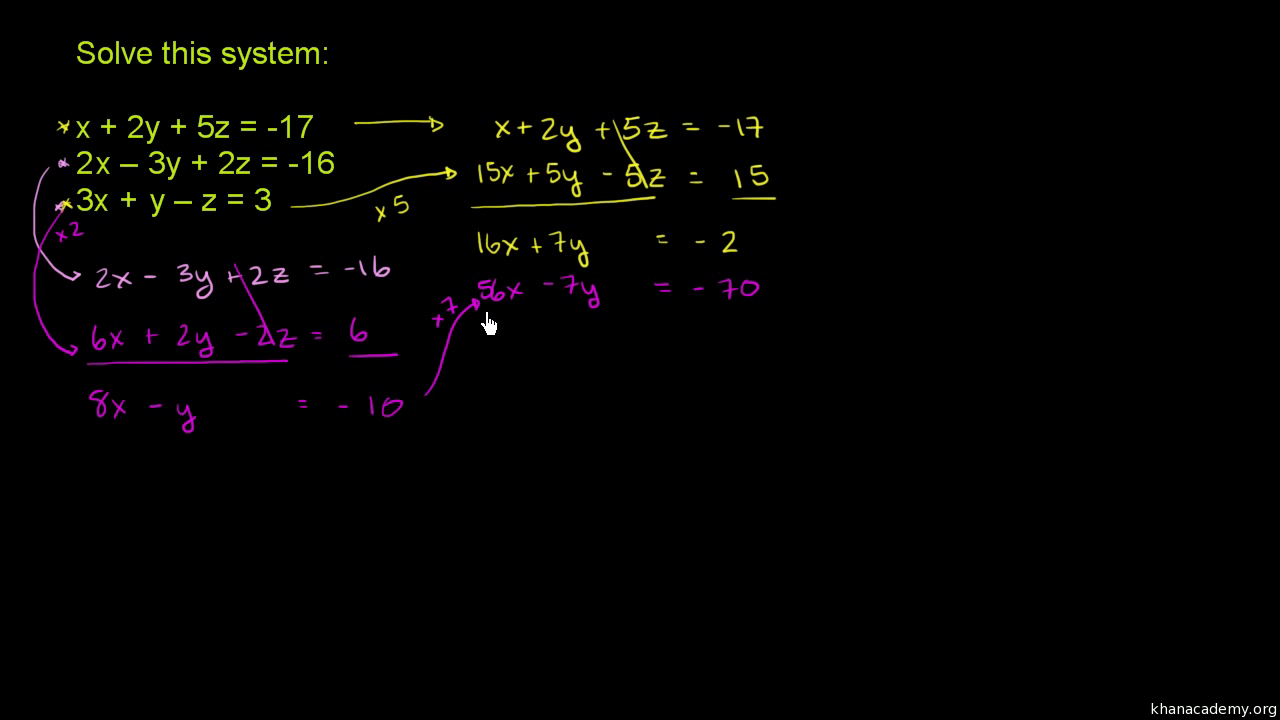


500 and your friend asks you the cost of each type.
#MATRIX SYSTEM OF EQUATIONS SOLVER HOW TO#
The required code is the same for systems defined using distributed arrays or arrays on the client memory.įor a related example that shows how to use iterative solvers and distributed arrays, see Use Distributed Arrays to Solve Systems of Linear Equations with Iterative Methods. You have bought two types of ice creams for Rs.
#MATRIX SYSTEM OF EQUATIONS SOLVER FULL#
In this example, the system is defined using full and sparse matrices. The system is defined by the matrix A and the column vector b.

This example demonstrates how to solve a simple system of linear equations of the form Ax = b with an exact, known solution x. Add a description, image, and links to the tridiagonal-matrix-solver topic page so that developers can more easily learn about it. mldivide selects one of a set of direct solver methods depending on the structure of A and whether A is full or sparse. Distributed arrays can contain different types of data including full and sparse matrices.ĭirect methods of solving linear equations typically factorize the coefficient matrix A to compute the solution. In the event that you seek assistance on standards or maybe quadratic equations, Polymathlove. Each worker stores a portion of the array in its memory, but can also communicate with the other workers to access all segments of the array. The Augmented Matrix of a System of Equations A matrix can serve as a device for representing and solving a system of equations. In the same way as for arrays stored in the client memory, you can use mldivide to solve can systems of linear equations defined using distributed arrays, so you do not need to change your code.ĭistributed arrays distribute data from your client workspace to a parallel pool in your local machine or in a cluster. This example shows how you can solve a system of linear equations of the form A x = b in parallel with a direct method using distributed arrays. I’m not an expert in this matter, so I don’t know much about preconditioners, factorization theorems etc.Distributed arrays are well-suited for large mathematical computations, such as large problems of linear algebra. This exercise has to be solved dozens of times, again and again if models change, so performance is always an issue. I would know how to squeeze out a little bit more performance by directly interfacing to cuSPARSE/C-MKL sparse dot product, but that’s it. SCIPY's sparse BLAS routines are not properly linked to MKL in Anaconda and Python wrappers around cuSPARSE are to my knowledge not available, yet. The code is written in Python and has access to the above listed libraries via Anaconda, Numba, Accelerate, Numpy etc.

The main (physical) constraint is that elements of x(t) are not allowed to become negative during integration.Ĭurrently, I employ a ‘naïve’ step solver The diagonal elements are negative or zero. A and B are sparse with ~10% non-zero elements. The dimension of the full system is around 2500*2500. The square matrices A and B are built up from smaller 60*60 upper triangular or zero matrices. Where A and B are constant matrices and C_d is a diagonal coefficient matrix which smoothly varies depending on the current value of the integration variable. I have a system of coupled ordinary differential equations


 0 kommentar(er)
0 kommentar(er)
